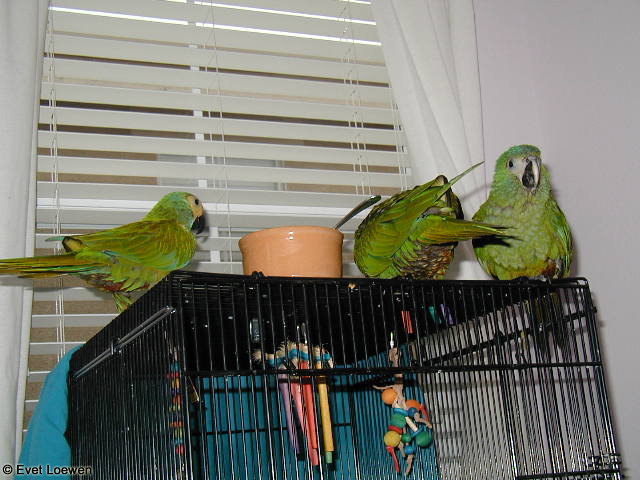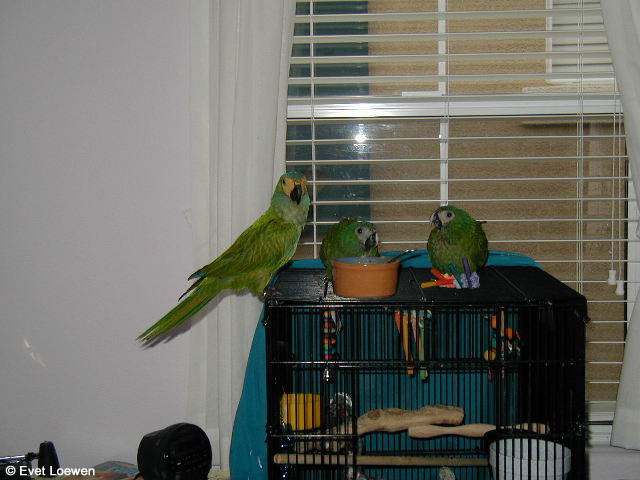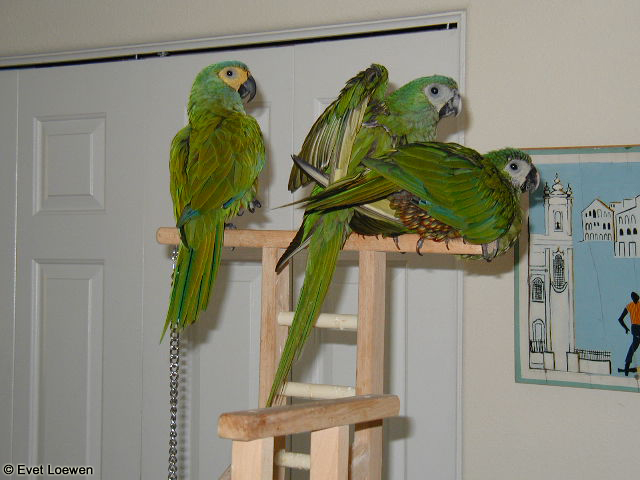Sophia had come into my life and the life of the flock on April 27th, 2000. As far as I knew, she had been a lone wild caught for some time, and I had no precise knowledge of age although I guesstimated 18 to 20 solely due to her wrinkly facial patch and feet -- no one could really tell. Although Sophia related well to others in the flock, she had no bonded other and most frequently perched apart from the other raucous small macaws and conures.
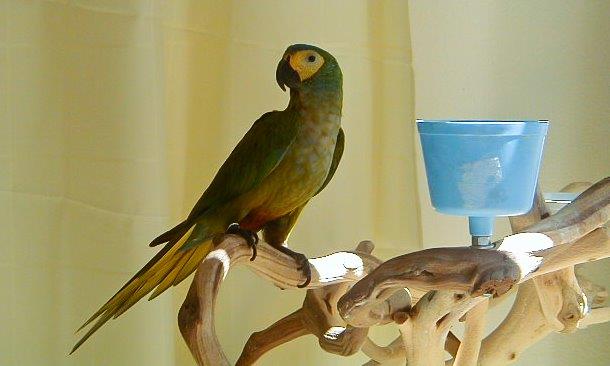
Sophia observing the observer
-at-play-70700.jpg)
Sophia's time to play
She liked to sit looking out a patio window for long periods of time, and I knew she did not belong inside. She was, after all, truly a wild bird.
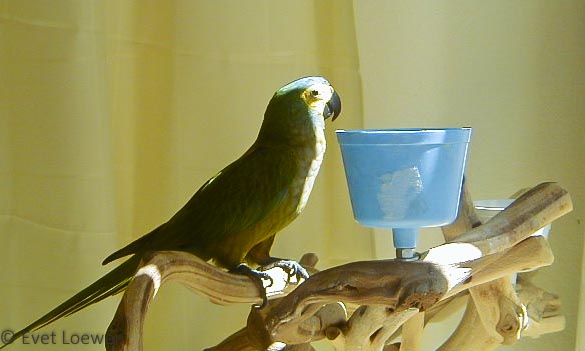
Sophia sunning
Sophia was older than the rowdy Blue-winged macaws shown in the photo below. (My Illiger's have been good natured but certainly believe generally that their fun comes first to the exclusion of other birds).
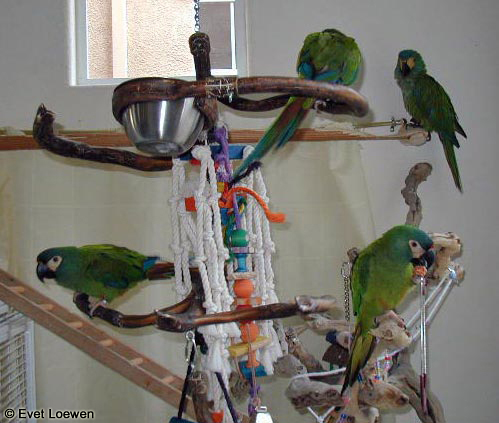
Illiger's ruling the roost and Sophia watching
Nonetheless, when one views photos of wild Red-bellied macaws actually living where they should be, they are typically in flocks of other Red-bellied macawsi. According to an article in Wikipedia:
"They roost communally in the moriche palms, and large numbers can be seen at the roost sites at dawn and dusk… They choose large stands of these palms that have an overabundance of woodpecker holes as roosting sites. They sleep communally in these groups of hollows. Depending on the size of the hollow, between five and 10 birds sleep together. As dusk approaches, they all pile into these dormitories and sleep shoulder to shoulder.ii"
There is little question in my mind that Sophia's daily life changed dramatically when Francie and Quattro, the two juvenile Red bellied macaws, arrived nearly a year to the day after Sophia arrived. I came home with these two on April 4, 2001 and had them set up in a spare bedroom together. As Sophia already had a "well-bird" exam on May 5, 2000, shortly after her arrival, I considered her to have been adequately quarantined and did not keep her separate from the two youngsters. She and they were introduced on April 6, immediately after the "well bird" exam for the two juveniles.
Her reaction was immediately one of curiosity, and also protectiveness over these two young manilatas.I had been very worried that there might be a negative or competitive attitude, but that was never the case. They became her family, her young, and her responsibility. Wherever they were, that's where she wanted to be. I saw her on more than one occasion drive other birds away from her "territory" in an aggressive, no nonsense manner that made it very clear that no other flock member except she could approach these two young. The behavior was not at all consistent with what I had previously witnessed -- a gentle bird and unique species, even if not really tame. The protective, territorial, and assertive behavior came on nearly instantaneously and the three accepted one another in a nanosecond.
The family unites
With that protectiveness, it seemed best to have them caged together. All three went into the largest King's cage that I had, and spent the days together. It was telling about the species.
Francie and Quattro still benefited from some handfeeding. Sophia was a bit wary when I reached in the cage to get one or both and do this, and sometimes exited the cage herself to observe the proceedings. It was about the only time that Sophia demonstrated any interest in where I headed and she would sometimes let out a large Red-bellied macaw holler when I did the feedings.
These were happy and fascinating months for Sophia, and also for me. I don't know how long it had been since she had been with other birds of her own kind. It was poignant to see her reaction. I was glad to be able to share that time. It was a tantalizing hint of what the species behavior might be in the wild, with young to guide and to guard.
Sophia, Quattro, and Francie 2001
Next Up in Red Bellied Macaw Chronicles Part 10: Unwelcome Lessons
Copyright (c) Evet Loewen. All parts of this blog including but not limited to the content written by the author, the photographs by the author, and data and information referred to or cited in this series of posts are copyrighted and may not be used for any purpose without the express consent of the author.
---------------------
i) One observer of the species in the wild, Mary McTague, has reported that the Yellow collar macaw (Primolius aricollis) sometimes has been viewed in mixed flocks with Red-bellied macaws and feeding in the same areas. ii) Wikipedia at http://en.wikipedia.org/wiki/Red-bellied_macaw




